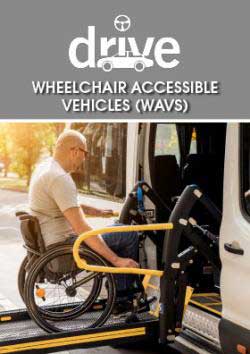With their interesting sights and smells, sensory gardens are perfect additions for schools to aid with the sensory development of children. Nicky Roeber, Online Horticultural Expert at Wyevale Garden Centres, has given us his easy guide to growing a sensory garden at school.
Sensory gardens are carefully planned to invoke all five senses with their plants and décor. They’re perfect for children, especially those with autism, as it provides a safe space to explore each stimulus and promotes sensory development. With National Children’s Gardening Week fast approaching, what better time to start planning your school’s sensory garden? I’ll be giving you my best tips for creating a garden to invoke all the senses.
Sight
There’s no doubt that gardens are a real treat for the eyes, but did you know that there’s so much more you can do visually than just adding some flowers? I’d recommend planting different types of shrubs and trees with a mixture of flowers and berries, as well as bark, lichen and moss.

When it comes to blooms, pick colours on the opposite side of the colour wheel for a contrasting look. For a more complementary style, pick a main colour and build on it with similar tones. For example, pick some nice purple flowers and complement them with pinks and blues.
Consider patterns and shapes of paths and flowerbeds and add ornaments to create an interesting display. Plants aren’t the only way to bring colour to your garden, though: you could also paint benches and walls, or try adding mirrors, which will reflect sunlight and make the space brighter.
If you’re using large ornaments and mirrors, make sure they’re fixed to walls and floors securely to avoid anyone being hurt.
Touch
Gardens are perfect places to explore interesting natural textures. Tightly-wound flowers such as houseleek are rather hard to the touch, whereas silver sage has cotton wool-like leaves which are a lot softer. For more rough textures, tree bark is perfect. Paper birch has lovely peeling bark which is scratchy and interesting for children to remove. Lamb’s ear has lovely smooth leaves covered in soft hairs which gives the leaf surface a silky feel. And don’t forget sticky plants like the carnivorous African sundew, which has sticky alien-like leaves to catch prey.
Smell
Who doesn’t love a sweet-smelling garden? Your plot will really benefit from sweet peas, which have a strong sweet smell. Chocolate cosmos plants have striking dark red petals and are a hit with kids because of their chocolatey vanilla scent. Lavender plants are strong smelling and are perfect for providing a sense of peace in your garden, ideal for calming over-stimulated children.
It wouldn’t be a sensory garden without some herbs, which provide some lovely smells as you brush past or get close to them. Peppermint is great for kids because of its sweet minty aroma, along with lemon thyme and rosemary.
Taste
When creating a sensory garden for children, it’s best to go for more familiar edible plants to avoid any confusion and the possibility of them eating anything that isn’t edible. Fruit such as strawberries are small and perfect for children to pick, as well as cherry tomatoes like ‘Sweet Million’ or the interesting ‘Tigerella’ variety.
Carrots, potatoes, radishes and runner beans are great for gardening with children and are a good opportunity to encourage them to eat more fruit and vegetables. Don’t forget about those lovely smelling herbs you planted, all of which are edible, too.
Sound
Using the right plants, you can create some interesting sounds in your garden. Try planting some birch trees which have fine leaves that rustle together in the breeze. Tall grasses, such as greater quaking grass, make some relaxing swishing sounds in the wind. Alternatively, the long tube-like stems of bamboo blow together to create a hollow knocking sound. You can even turn bamboo into windchimes and hang them up on windy days. For a more unusual sound, the small pods of love-in-a-mist contain seeds, which create an interesting rattling when the pods are shaken.
Add bee and bird houses to encourage them to visit your garden, providing lovely buzzing and chirping sounds in the summer. This also presents a great opportunity to talk to children about the importance of insects and birds, and why we should protect them.

















